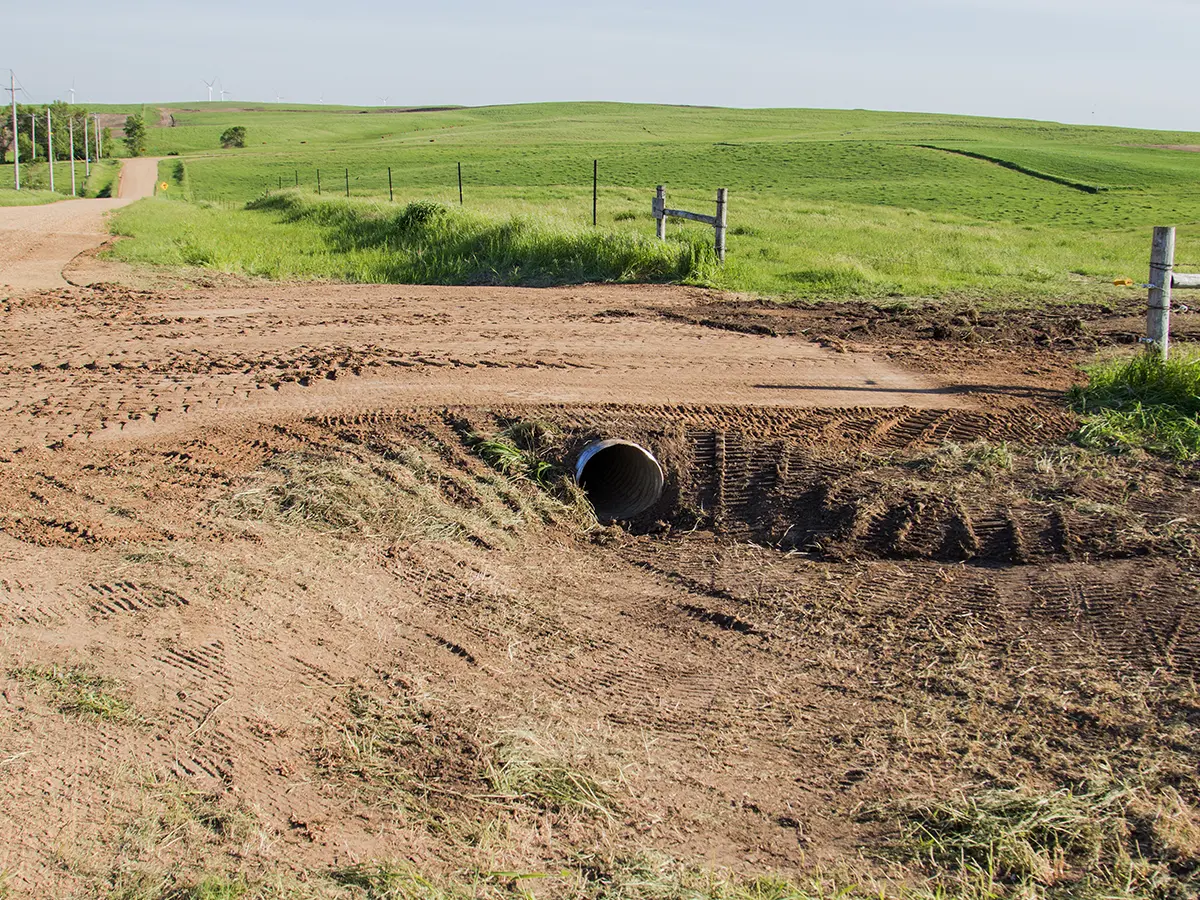Efficient Underbrush Clearing for Clean and Safe Land
Efficient Underbrush Clearing for Clean and Safe Land
Blog Article
Culvert Setup Made Easy: Step-by-Step Overview for Success
From selecting the proper culvert dimension to integrating proper drain actions, each step in the installation process plays a critical function in the capability and longevity of the culvert system. Remain tuned to discover the important steps and considerations that can make culvert installation a smooth and effective undertaking.
Picking the Right Culvert Dimension
Choosing the suitable culvert size is crucial for ensuring efficient water flow and structural integrity in culvert installation tasks - Pad Construction. The dimension of the culvert directly impacts the circulation capability of water with the structure. A culvert that is also tiny can bring about flooding and overflow, while one that is as well large may lead to lowered water speed, potentially triggering debris build-up and clogs
To identify the appropriate culvert size, variables such as the watershed location, height circulation rates, and hydraulic efficiency demand to be very carefully considered. Estimations based on these specifications aid in choosing a size that can adequately manage the expected water volume while reducing the threat of blockages and structural failing.
It is important to consult design guidelines and standards to make sure that the picked culvert dimension fulfills the task requirements and regional regulations (Pad Construction). By selecting the ideal culvert dimension, project supervisors can optimize water flow, avoid potential problems, and improve the total performance and long life of the culvert installation
Preparing the Installation Website
Effective culvert installation requires precise prep work of the installation site to make sure optimal architectural support and capability. Before commencing the installation procedure, it is important to clear the site of any debris, vegetation, or obstructions that might impede the culvert's positioning.
Furthermore, it is essential to think about aspects such as dirt composition, groundwater levels, and environmental effects when preparing the setup website. Performing a thorough site evaluation can assist determine any kind of potential challenges or risks that may impact the culvert's performance. By putting in the time to prepare the installment website correctly, you can help guarantee a successful culvert setup that satisfies architectural needs and makes certain long-term functionality.
Putting the Culvert Properly

The grade at which the culvert is placed is crucial for preserving a correct slope for water circulation. A steady slope assists avoid pooling and promotes reliable drainage. Furthermore, the culvert must be oriented correctly to ensure that the inlet and electrical outlet are in the site link proper places. This alignment is important for the culvert to work properly in managing water circulation.
Backfilling and Condensing the Soil
Appropriate backfilling and compaction of the dirt around the culvert is vital to ensure stability and avoid prospective problems in the future. When the culvert is appropriately positioned, the following vital action is to backfill the location around it with ideal product. The backfill material should be devoid of rocks, debris, and organic matter to stay clear of damages to the culvert. It is advised to use granular material such as sand or gravel for backfilling, as it provides good water drainage and compaction homes.
After placing the backfill material, it is very important to small it in layers of uniform thickness. Using a compactor or a mechanical tamper, discover this info here portable the soil carefully to prevent damaging the culvert. Compaction helps in lowering the possibilities of settlement and makes sure uniform assistance around the culvert. It is important to compact the soil evenly on all sides of the culvert to maintain its architectural stability.
Correct backfilling and compaction not only this offer security to the culvert however additionally help in preventing dirt erosion and preserving the longevity of the culvert system.
Making Certain Appropriate Drain Integration
Incorporating effective water drainage remedies plays a critical role in the general capability and durability of culvert setups. Appropriate drainage combination is essential for handling water circulation, protecting against erosion, and making sure the architectural honesty of the culvert system. To attain this, it is important to create a thorough drainage strategy that thinks about aspects such as the quantity of water anticipated, the topography of the area, and the sort of soil present.

In addition, integrating features like disintegration control steps, such as riprap or plant life, can additionally improve the effectiveness of the drainage system. By meticulously planning and executing these drainage remedies, culvert installments can function successfully and withstand the test of time.
Verdict
Finally, proper culvert installment is important for keeping effective drainage systems. By choosing the best culvert size, preparing the installation website, placing the culvert appropriately, backfilling and compacting the dirt, and ensuring appropriate drainage combination, success can be attained. Following these steps will certainly help make sure the long life and effectiveness of the culvert, eventually adding to the total success of the drainage system.
Report this page